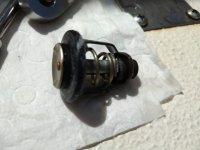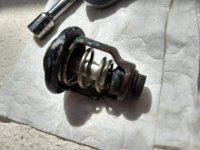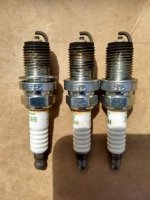SeaSpray
Active member
- Joined
- Mar 11, 2004
- Messages
- 1,011
- Reaction score
- 0
- C Dory Year
- 2004
- C Dory Model
- 22 Cruiser
- Vessel Name
- SeaSpray
Hi Tim,
Good video. Sorry I can not help with the noise. I have the same year Johnson 90. Do you have the tach with the digital display that shows engine hours and fuel information? I have had a problem with mine.
I hope someone can identify the noise.
Steve
Good video. Sorry I can not help with the noise. I have the same year Johnson 90. Do you have the tach with the digital display that shows engine hours and fuel information? I have had a problem with mine.
I hope someone can identify the noise.
Steve





